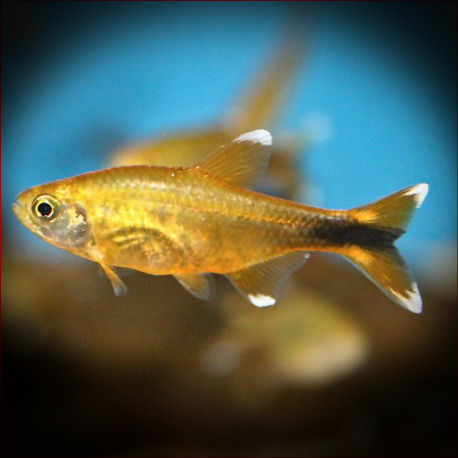More info
Datasheet
| Minimum Tank Size | 70 litres / 18.49 US gallons |
| Maximum Size | 5.0cm / 1.97inches |
| Temperature | 23°C / 73.40°F - 28°C / 82.40°F |
| Hardness | 5-20ºdH |
| pH | 6.0-8.0 |
General Description
The Silvertip Tetra, scientifically known as Hasemania Nana, is a species within the Characidae family that lacks an adipose fin. Widely available in the aquarium trade, this tetra, also called the Copper Tetra, is well-suited for beginner fishkeepers due to its captive-bred nature and adaptability to various water conditions and diets. It is a lively, colorful, and peaceful fish that thrives in community setups.
Aquarium Setup
Adaptable to various tank conditions, the Silvertip Tetra is best housed in a heavily planted tank to bring out its vibrant colors. Though not a natural habitat feature, aquatic plants enhance their environment. For a biotope setup, opt for a sandy substrate, driftwood branches, twisted roots, and dried leaves like oak or beech. Dimmed lighting further enhances their appearance, with water conditions ranging from a pH of 6.0-8.0, hardness of 5-20°dH, and a temperature of 23-28°C.
Behaviour
Known for its peaceful nature, the Silvertip Tetra makes an excellent tank mate for various species, including livebearers, danios, rasboras, other tetras, as well as bottom-dwelling fish like Corydoras. While solitary individuals may display slight aggression, keeping them in groups of at least six significantly reduces this behavior. Groups of 10 or more are recommended for optimal social interaction.
Feeding and Diet
Feeding the Silvertip Tetra is hassle-free as it readily accepts a wide range of foods, from live and frozen options like bloodworms, Daphnia, and brine shrimp to dried flakes and granules. Regular meals of these foods help maintain their best condition and vibrant colors.
Reproduction & Dimorphism
Breeding the Silvertip Tetra is relatively straightforward but requires a separate breeding tank. The process involves dim lighting, fine-leaved plants for egg deposition, and careful monitoring to prevent adults from consuming the eggs. Males exhibit more intense coloring and a slimmer body compared to females.
Habitat and Distribution
In the wild, the Silvertip Tetra is commonly found in the Rio São Francisco basin in Brazil, inhabiting creeks and tributaries away from primary river channels. It thrives in both white and blackwater environments, showcasing its adaptability to varying habitat conditions.

